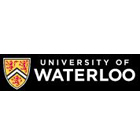Discover how to manipulate individual atoms and molecules in Materials and Nanosciences at Waterloo. As one of the top nanoscience programs in Canada (QS World University Rankings by Subject 2021), this program has lots to offer, including paid co-op opportunities. Youll learn the ins and outs of designing composite materials, ceramics, semiconductor materials, fuel cells, energy storage devices, solar cells, and more. And thanks to small classes, youll have plenty of opportunity to connect with other students and professors. Materials and Nanoscience is a mix of chemistry, physics, and math. Youll also take materials science courses where you learn about what makes a substance unique. For example, if you arrange atoms in a certain way, why does the material have stability and strength rather than flexibility In upper years, you can choose to take more chemistry or physics. It all depends on what aspects of materials science you enjoy. Build an awesome r'sum. Conduct research in our world-leading Quantum-Nano Centre, or join Waterloo's NanoRobotics Group. If you opt for co-op, youll gain valuable skills during your five work terms. Meet other nano-geeks. The student-run Materials and Nanoscience (MNS) Society hosts lab events, social outings, and professional development workshops to equip you with the tools for success. Dive into the world of nanoparticles and learn about the properties of materials, such as superconductors, insulators, and biomaterials, and how they are designed and synthesized. Materials science is one of the oldest forms of applied science, with certain eras of time such as the Stone, Bronze, and Iron ages named after the material of major significance. With new technologies assisting scientists to see the world on a whole new level, materials science has become increasingly important and essential.





